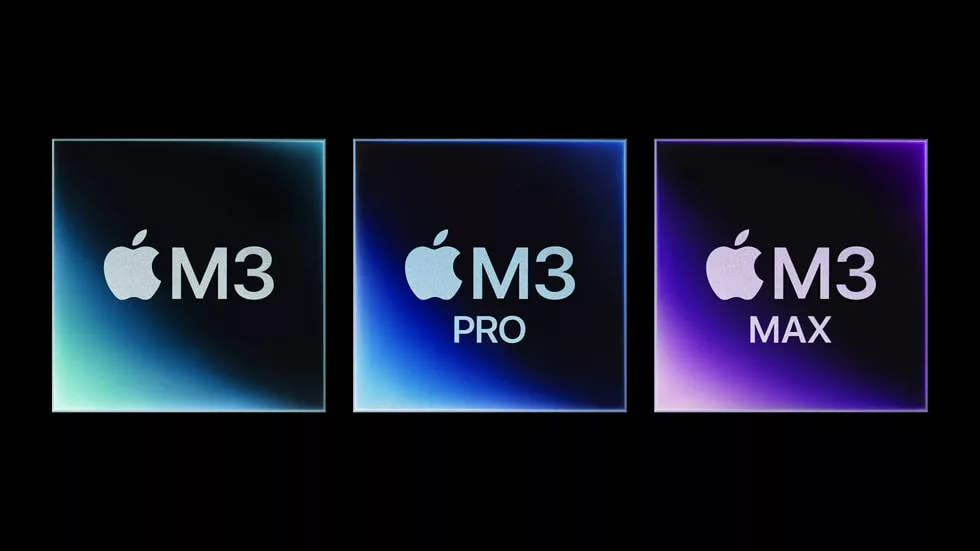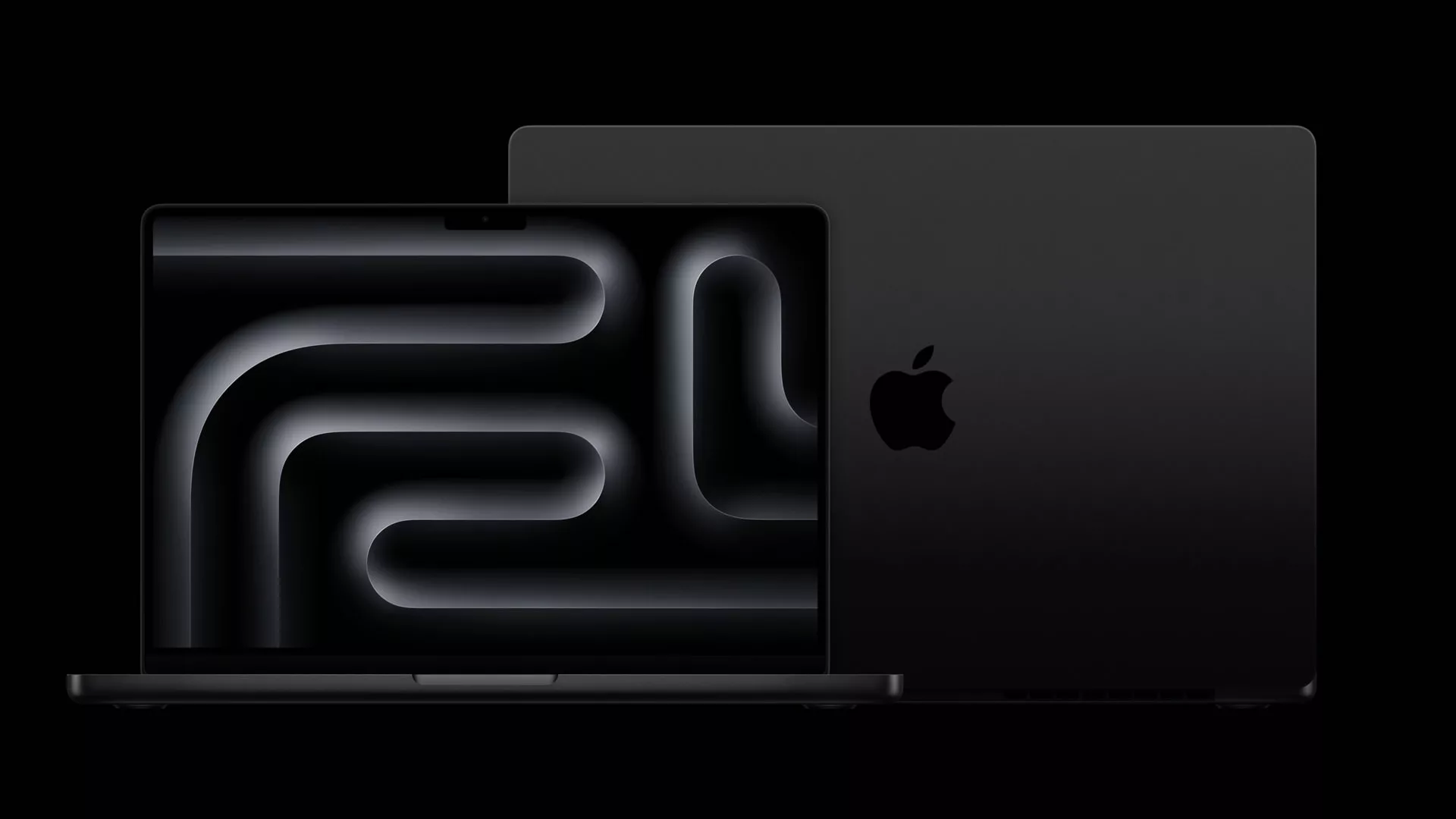Apple’s ‘Scary Fast’ event on October 30 turned out to be a cornucopia of tech announcements – something that will evidently be to the liking of Apple and tech enthusiasts across the globe. The new announcements include new additions to the company’s existing MacBook Pro and iMac computer families, as well as three new and powerful chips to power them.
New and powerful chips
Let us tackle the chips first. Apple’s M3 chip lineup includes three variants: M3, M3 Pro, and M3 Max. Apple notes that these chips are the first in the industry to use the cutting-edge 3-nanometer manufacturing process. The switch to 3-nanometer technology enables more transistors to be packed into a smaller space, resulting in improved speed, efficiency, and overall performance. “Together, M3, M3 Pro, and M3 Max show how far Apple silicon for the Mac has come since the debut of the M1 family of chips,” the company said in an official statement. One of the most significant enhancements in the M3 chips is the revamped GPU architecture. This innovation represents the most substantial advancement in graphics technology ever seen in Apple’s silicon. The GPU offers improved speed and efficiency while introducing a new feature called Dynamic Caching. Additionally, it brings hardware-accelerated ray tracing and mesh shading to Apple’s lineup for the first time. The M3 Pro comes with an improved 12-core CPU with six performance cores and six efficiency cores, as well as an 18-core GPU that is claimed to be up to 40% faster than the M1 Pro.
The M3 family of chips offers something for everyone. The M3 chip is ideal for students, business owners, and those with everyday computing needs. M3 Pro enhances performance and memory support, catering to coders, creatives, and researchers. M3 Max is the powerhouse, with extreme performance and the capability to handle demanding tasks like machine learning, 3D design, and video editing.
The M3 chips also feature an advanced CPU design, with architectural improvements to both performance and efficiency cores. The new GPU in the M3 family delivers rendering speeds up to 2.5 times faster than the M1 family of chips, reflecting a remarkable leap in graphics performance. The M3 Max, on the other hand, sports a 16-core GPU with 12 performance cores and four efficiency cores, and a 40-core GPU that is claimed to be up to 50% faster than the M1 Max. The powerful chip also supports up to 128GB of unified memory, and its GPU is said to perform up to 80% than the M1 Max. Apple has also equipped the M3 Max with two ProRes engines, facilitating rapid and fluid video post-production work on high-resolution content. Whether using DaVinci Resolve, Adobe Premiere Pro, or Final Cut Pro, the M3 Max ensures seamless video editing, making it a top choice for professionals who require both performance and extended battery life.
Apple’s focus on machine learning (ML) is evident in the M3 chips. The enhanced Neural Engine is up to 60% faster than the M1 family of chips. This boost accelerates AI and ML workflows, ensuring faster processing while keeping data on the device to uphold user privacy. The M3 chips also empower powerful AI image processing tools, such as noise reduction and super-resolution, making tasks like scene edit detection and Smart Conform more efficient. These chips are designed to meet the growing demands of AI and ML applications in professional environments. “Apple silicon has completely redefined the Mac experience. Every aspect of its architecture is designed for performance and power efficiency,” said Johny Srouji, Apple’s Senior VP of Hardware Technologies. “With 3-nanometer technology, a next-generation GPU architecture, a higher-performance CPU, faster Neural Engine, and support for even more unified memory, M3, M3 Pro, and M3 Max are the most advanced chips ever built for a personal computer.”
Refreshed lineup of Macbook Pros
Other announcements included the unveiling of a brand new lineup of MacBook Pros, refreshing both the 14-inch and 16-inch models. In a surprising move, it also bid farewell to the old 13-inch MacBook Pro. The company has introduced a budget-friendly version of the 14-inch MacBook Pro, starting at $1,599. This particular model features the standard M3 chip, setting it apart from the more advanced M3 Pro and M3 Max variants. While the base M3 MacBook Pro comes with a few compromises – starting with 8GB of RAM, fewer Thunderbolt ports (two in total), and support for only a single external display – it offers excellent value at its lower price point. Surprisingly, it retains several key features, including the high-refresh-rate ProMotion display, mini LED screen technology, MagSafe connector, a 1080p camera, 512GB of storage in the base model, a robust speaker system, and a full-sized HDMI port. Even though Apple claims “up to 22 hours of battery life” for all new MacBook Pro models, real-world usage suggests that the M3 chip should provide a bit more runtime compared to the M3 Pro or Max variants.
Apple claims all MacBook Pro models provide up to 22 hours of battery life, and they feature advanced thermal systems to maintain performance. The extended battery life is a remarkable feat, offering a high degree of portability without compromising on power.
The event unveiled an array of MacBook Pro models to cater to various user needs. It brings an updated 14-inch MacBook Pro with the M3 Pro chip, which starts at $1,999, and is joined by an updated 16-inch MacBook Pro. The flagship MacBook Pro starts at $2,499 with an M3 Pro processor and is upgradeable to M3 Max for an additional cost. All MacBook Pro models come with an HDMI port and an SD card slot alongside USB-C ports. This enhanced connectivity distinguishes the MacBook Pro from MacBook Air models, which only feature USB-C ports, and the high-end MacBook Pros with the Pro and Max chips are available in a new “Space Black” color. Apple has applied an anodization process to the aluminum finish to reduce fingerprint smudges.
24-inch iMac with an M3 chip
Another major announcement made at the event includes the new 24-inch iMac with the M3 chip. At the center of the new iMac is the stunning 24-inch 4.5K Retina display, strategically positioned between the 4K and 5K Intel iMacs to provide the best of both worlds. The 4.5K display boasts an impressive 11.3 million pixels and offers a remarkable 500 nits of brightness. It’s complemented by a 1080p FaceTime camera and a six-speaker system supporting both Spatial Audio and Dolby Atmos. The device comes with vibrant color choices, including green, yellow, orange, pink, purple, blue, and silver. It’s shipped with a matching keyboard and either a trackpad or mouse. Users can opt for Touch ID as an additional feature for the keyboard.
The new iMac is also equipped with Wi-Fi 6E and Bluetooth 5.3, offering improved wireless performance compared to its predecessor. With four USB-C ports, including two supporting Thunderbolt, and the option for Gigabit Ethernet support on select models, it guarantees versatile connectivity options. Furthermore, the device gets a significant performance boost with the introduction of the M3 chipset. During the presentation, Apple claimed that the new iMac would be up to twice as fast as its predecessor, which featured an M1 chipset. For those upgrading from an Intel-based iMac, the new M3 model promises to be up to 2.5 times faster than some of the most popular 27-inch Intel-based models. The new iMac also retains its sleek design and the same 4.5K Retina display, maintaining design consistency while upgrading performance.
“Millions of users absolutely love iMac for its stunning design and expansive 24-inch, 4.5K Retina display that’s the perfect size to spread out with all their favorite apps and get things done. And now M3 brings even more speed to everything users do, whether multitasking, creating captivating images and videos, working on a business plan, or playing their favorite games. The new iMac with M3 is incredible for anyone, especially those who haven’t yet upgraded from Intel, providing a giant leap in performance and capabilities only possible with Apple silicon,” Ternus said.
Orders for the M3 iMac began on the day of the announcement, with shipping scheduled to start on November 7. The base model includes an eight-core GPU, two Thunderbolt ports, Magic Keyboard, and Magic Mouse. However, it offers a modest 256GB of SSD storage and 8GB of unified memory at a starting price of $1,299, while the Mac with 10-core GPU starts at $1,499. For aspiring creatives, the M3 iMac presents an exciting opportunity. It enables editing and playback of up to 12 streams of 4K video, which is three times more than the previous model. Creative tasks like video editing and photo processing are up to 2 times faster. With the advanced GPU of the M3, the iMac supports hardware-accelerated mesh shading and ray tracing, resulting in more realistic gaming experiences and quicker 3D design.
The Tech Portal is published by Blue Box Media Private Limited. Our investors have no influence over our reporting. Read our full Ownership and Funding Disclosure →









